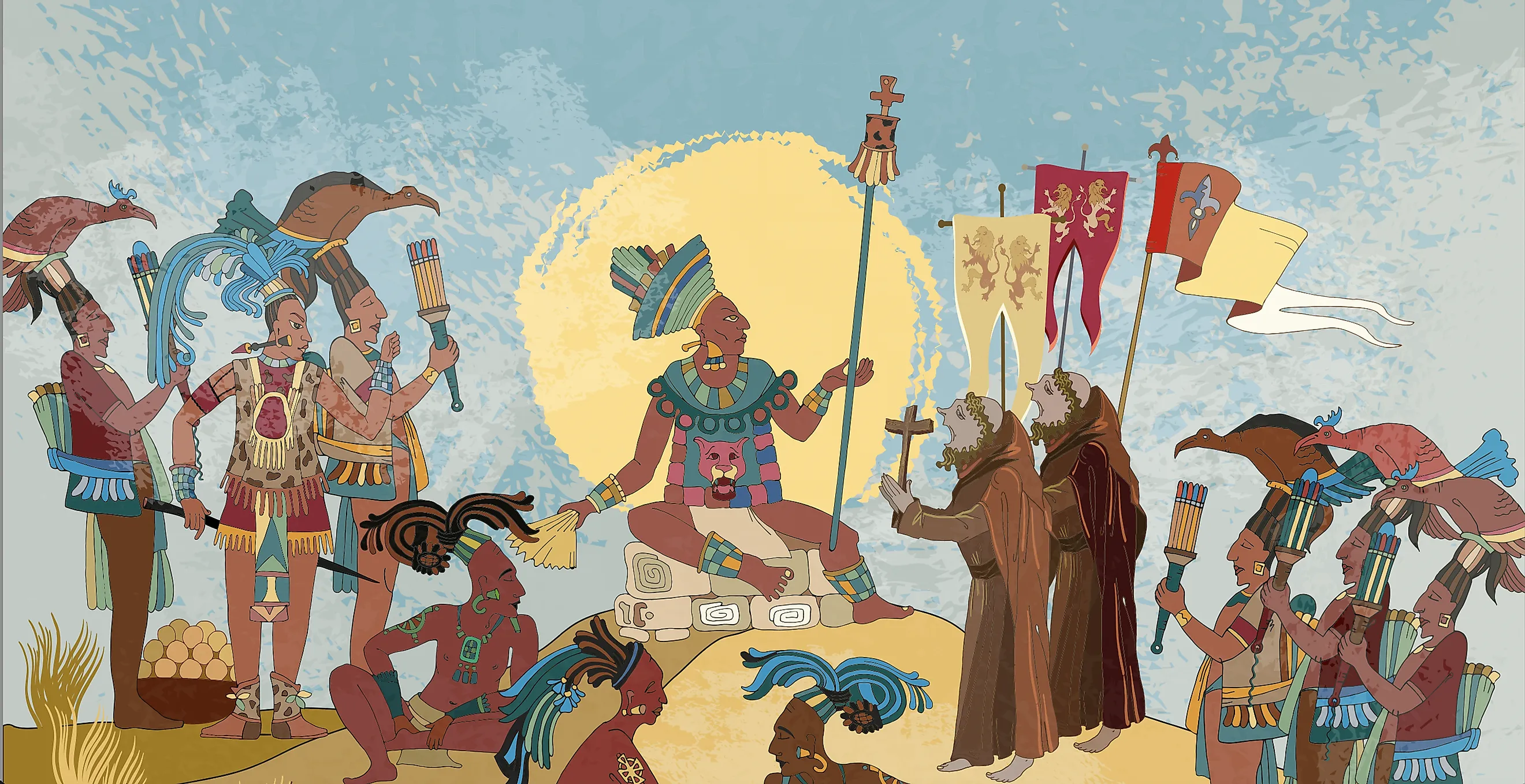
Discover The Differences Between The Mayans and Aztecs
The term Mesoamerican is a messy and often lazy way to describe the various great civilizations that inhabited Central America before the arrival of the Spanish in the 16th century. There were dozens of famous civilizations that rose and fell, each with its own unique culture and way of life. However, no other Mesoamerican civilizations have captured the public's attention quite like the Aztecs and the Maya. These two giants of Mesoamerican history are the poster children for this fascinating period and are represented so similarly that many people understandably have a hard time distinguishing one from another. This article hopes to bring up the meaningful difference between these two and see how each civilization shaped and transformed life in this region.
Mayan Origins
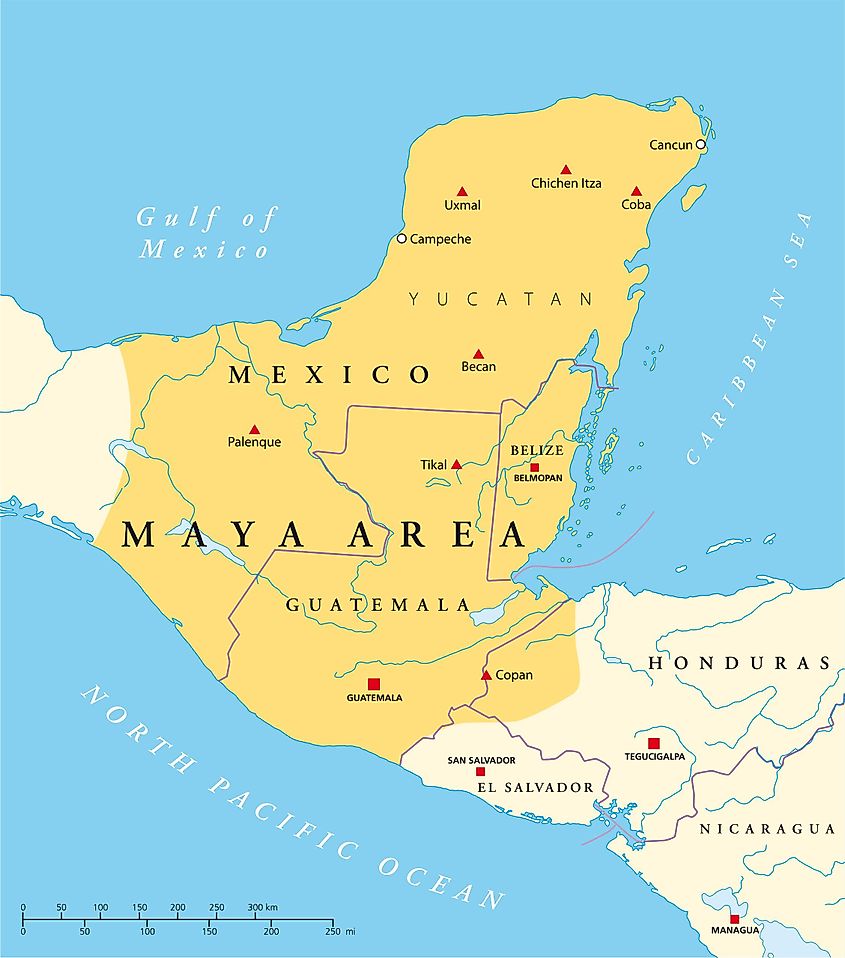
The Mayan civilization first began as far back as 2000 BC. The Early Maya, as historians often call them, would have lived mostly as a tribal group alongside the first great Mesoamerican civilization, the Olmecs, until they started to construct large cities of their own around 200 AD. It would not take long for the Mayan Empire to reach across much of the Yucatan Peninsula and most of Central America. Belize, Guatemala, El Salvador, Honduras, and southern Mexico were all firmly under their control. The Mayans were expert urban planners. Each city they built acted both as a base of operations to project their military presence and as a trade hub. The Mayan economy relied heavily on trade with nearby city-states and tribes.
Aztec Origins
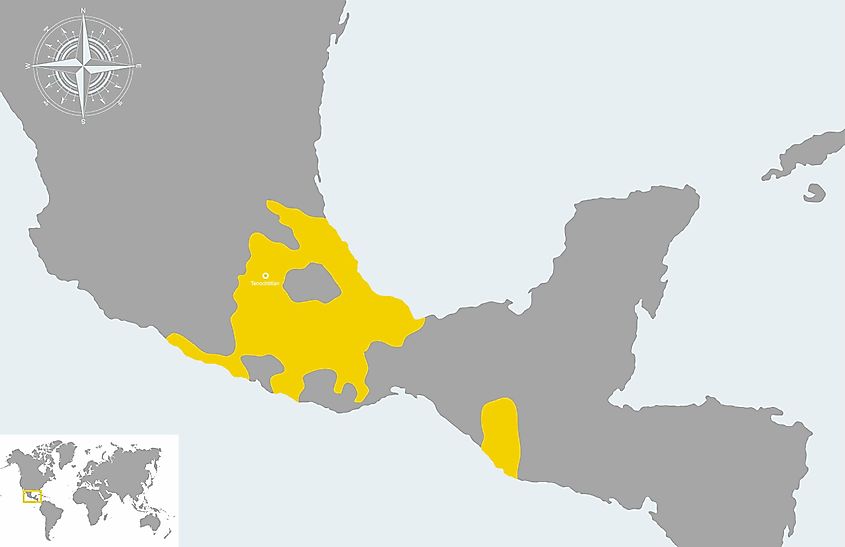
The Aztec's rise to power happened much later in history than most people seem to realize. By 900 AD, the Mayans had mostly vanished from much of Central America and abandoned most of their cities. Contrary to popular belief, the Aztecs did not directly descend or inherit their empire from the Mayans but built their own independently.
The origins of the Aztec people are unclear, but many experts lean towards the theory that the Aztecs were once nomadic people hailing from Northern Mexico who eventually settled down in Central Mexico sometime in the 13th century AD. The Aztecs arrived right at the same time as the current great power of Mexico; the Toltecs were in decline. In the power vacuum left by the Toltecs, the Aztecs pounced on this opportunity and were soon a big player in regional politics.
Legend has it that their capital city was founded after the Aztec people saw an eagle land on a cactus in the middle of a marsh. The Aztecs saw this as a sign from their gods to build their capital there. They drained out most of the marsh and established their new city, Tenochtitlán, in 1325 AD.
Mayan Language
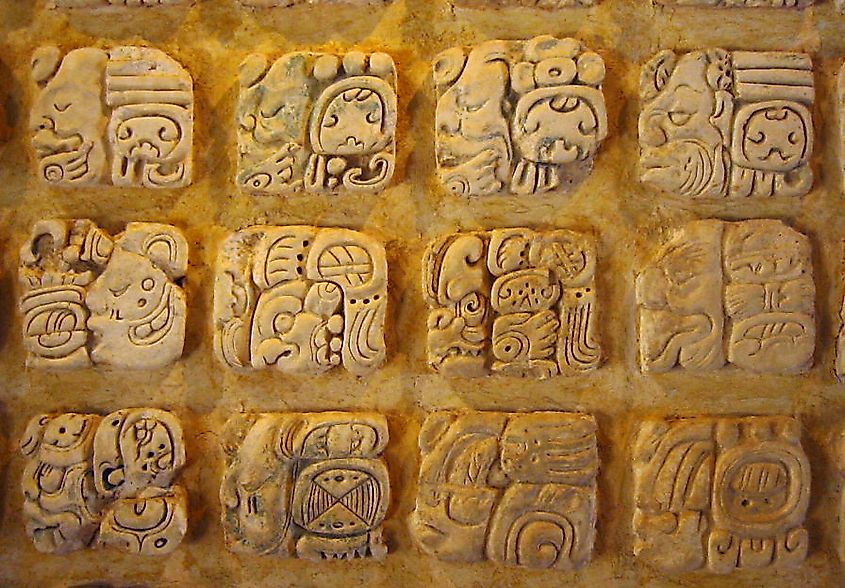
The Mayan language would be better described as an umbrella term encompassing dozens of various sublanguages, dialects, and accents. Several forms of ancient Mayan exist today in numerous parts of Central America. The Classical Mayans themselves are thought to have spoken Ch'olan. The Mayan language was not just oral. Mayan hieroglyphs had long puzzled historians and archaeologists alike for hundreds of years until they were finally deciphered in the 20th century. The written aspect of their language is incredibly complex. Once their writing system was eventually understood, it revealed much more about the Classical Mayan period and the origins of the people. Something that had long been a mystery.
Aztec Language
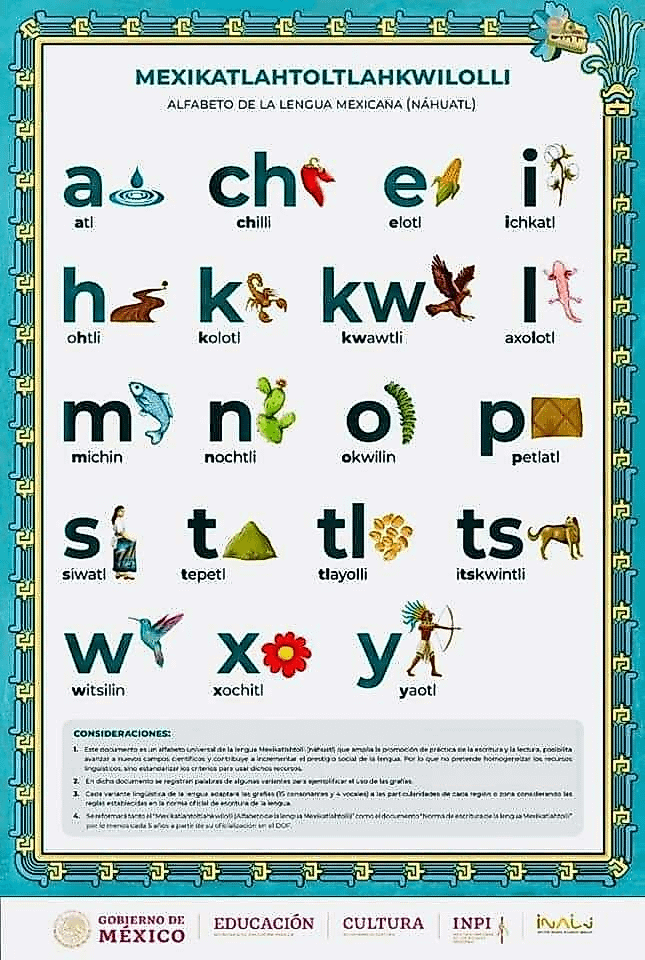
The language of the Aztecs, Nahuatl, was not just spoken by the Aztecs but by other Mesoamerican groups as well. The Toltecs, the dominant peoples who ruled much of Mexico before the Aztecs rose to power, also spoke this language. The written aspects of the Nahuatl language are rather unique. Instead of letters or other similar symbols, the Nahuatl language uses what is called a pictographic script. Using small pictures instead of letters, each picture means something different. Thankfully, much of the Nahuatl language survived the Spanish conquests of the 16th century and was preserved mainly by the newly arrived priests and clerics. Today, the language is still spoken in certain parts of Mexico.
Mayan Governance
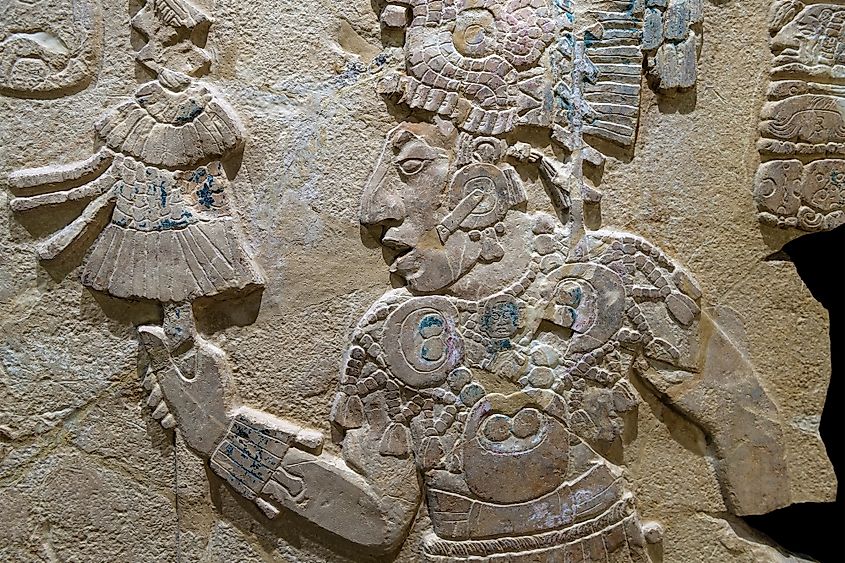
It has been argued by some that the Mayan Empire was not functionally an empire at all but rather a collection of semi-autonomous city-states that all worked toward a shared goal. This system, at face value, allowed each city to be ruled as each king saw fit without stepping on the toes of other monarchs in the region.
At times, this system worked wonderfully and ushered in ages of unprecedented economic and cultural success. However, this did eventually create an environment that fostered chaos and disorder as each city-state would constantly jockey and vie for power over their neighbor. Whether this meant shrewd alliances and diplomatic scheming or outright war, this system eventually caved in on itself, and it is thought to have been a reason for the eventual collapse of the Maya in 900 AD.
The largest and most prosperous cities within the Mayan Empire were most likely Tikal and Calakmul. Tikal is famous today for its grand pyramids and enormous central plaza. Photos do not do justice to just how large the city's center is. Calakmul, on the other hand, is believed to be the largest of the Mayan cities. At its height, Calakmul probably had a population as high as 50,000 and certainly used this to its advantage.
Aztec Governance
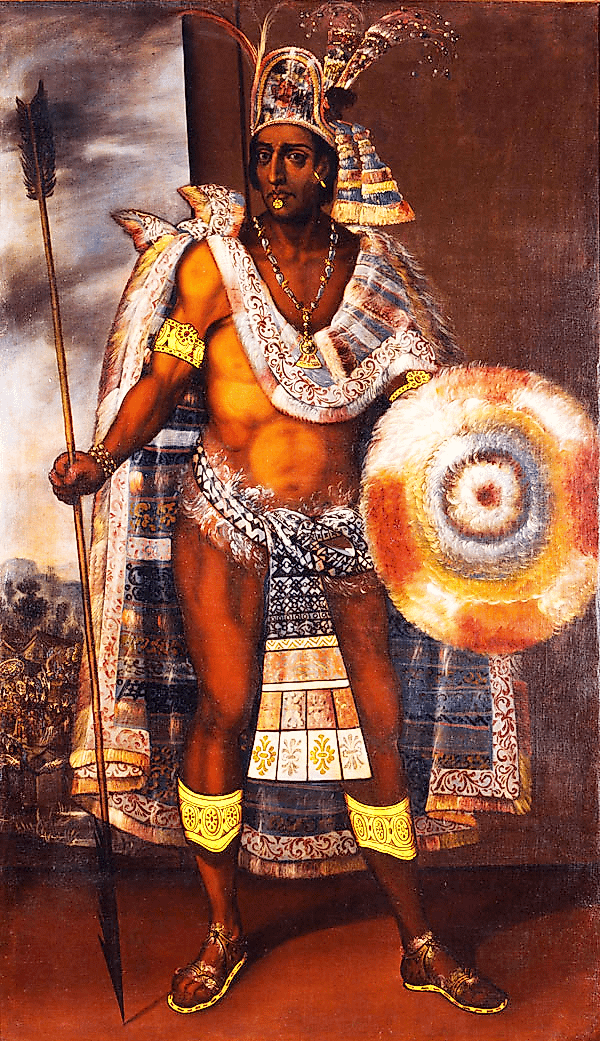
The Aztecs governed much similar to how most people think an empire would. Ruling directly from the capital city of Tenochtitlan, the emperor of the Aztecs ruled over dozens of various people groups that were not Aztecs themselves. The Aztecs were not actually a single people but rather the result of an alliance of three separate groups. The Mexica, Texcoco, and Tlacopan, each of which were separate city-states, joined together in 1428. Often referred to as the Triple Alliance, this new political union quickly conquered nearby cities and lands within Central Mexico.
The emperor himself played an enormous role in the everyday functions of day-to-day life. The Aztec government was made up of an enormous class of bureaucrats, military commanders, and religious leaders, all of whom followed the emperor's commands. Aztec society has often been called a "quasi-feudal" state, but this is not entirely accurate. Whereas European-style feudalism was much more decentralized, the emperor in Aztec society had near absolute power with a few small and often trivial exceptions.
Mayan Religion
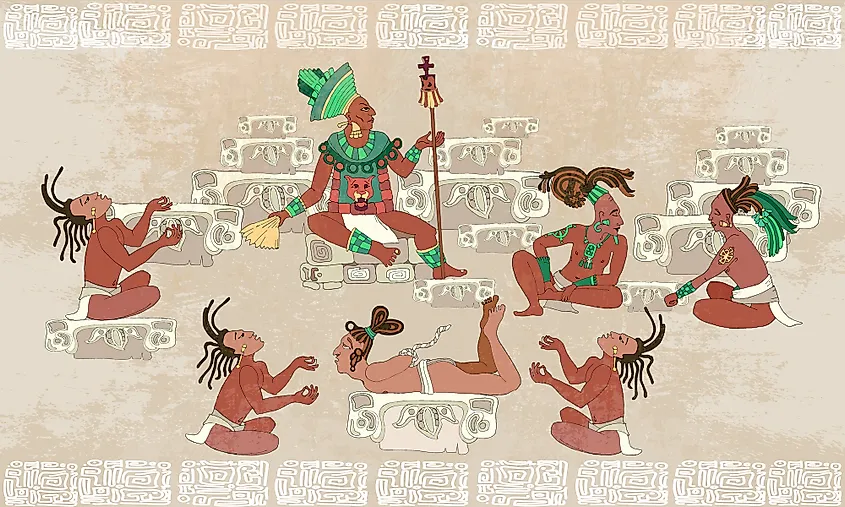
The Mayans, like the rest of Mesoamerica, were polytheists, meaning they worshiped many gods. Unlike a single all-powerful god that is described in the Abrahamic faiths of Judaism, Christianity, and Islam, the Mayans believed that there were various gods in charge of certain aspects of life. The Mayans believed that Huracán, the god of the wind and sky, created the Earth. Once the Earth was created, so were animals, but Huracán was not satisfied with just having animals because they could not speak and honor the god. So Huracán made humans so he and the other gods could have worshipers.
Huracán first created humans out of mud but had them destroyed because they were too simple. Then, he tried to make humans out of wood but destroyed them because they did not honor the gods. Lastly, Huracán made humans out of maize, but they were too wise, and Huracán saw this as a threat. He almost destroyed this third creation as well but decided to cloud their minds so that they would worship him and the other gods correctly. It is these humans who were made from maize that the Mayans thought modern humans descended from.
The Mayans had quite a cynical outlook on life and thought that modern humans would one day be destroyed themselves for disappointing or disobeying the gods. Bloodletting was a common practice in the Mayan faith and was only expected from royalty. Since it was thought that the gods used their own blood to create humans, it only made sense for the royal bloodlines of the Mayans to honor the gods by spilling their own blood in rituals.
Human sacrifice was also a part of the Mayan religion, but it probably did not happen often. In the rare cases that it did, the person being killed would have likely been a member of another city's ruling elite. This ritualistic killing was usually done either by decapitation, throwing the captive into a deep pit, or the infamous method of removing the heart from the captive.
Aztec Religion
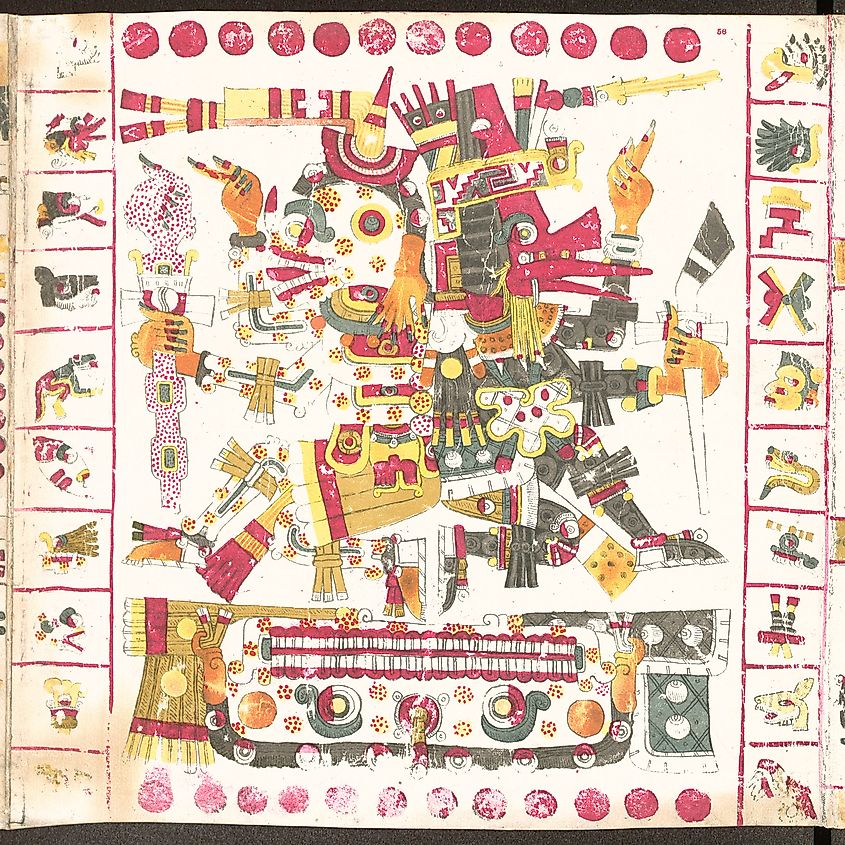
Much like their Mesoamerican cousins, the Mayans, the Aztecs also believed that there were many gods who represented various facets of life. The most important of these gods was undoubtedly Huitzilopochtli, the god of the sun and war. Huitzilopochtli, which literally translates into hummingbird in Nahuatl, was thought to have taken the form of an eagle and guided the Aztec people to the founding site of their capital city, Tenochtitlan. Seen as a kind of "founding god," the worship of Huitzilopochtli was certainly prioritized above the others. It is said that the first building ever built in Tenochtitlan was a shrine dedicated to Huitzilopochtli. This shrine was eventually expanded into a grand temple in 1428 under the watch of Emperor Ahuitzotl.
A central tenant in the Aztec religion was trying to keep the gods, particularly Huitzilopochtli, satiated and happy. In the minds of Aztec religious leaders, Huitzilopochtli was fighting an eternal battle against darkness and needed the blood of humans to keep fighting. If the darkness somehow won, the world would end. The Aztecs attempted to keep Huitzilopochtli satisfied by offering him the beating hearts of humans on a near-daily basis.
According to the accounts of Spanish Conquistadors in the 16th century, they were witness to one of these sacrifices. They described towers of human skulls belonging to previous victims being placed at the base of the largest pyramid temple in Tenochtitlan. The claims were long thought to be nothing more than exaggerated nonsense, but upon further investigation in 2015, these claims by the Spanish were, at the very worst, partially true. Human sacrifice and even ritualistic cannibalism were a core part of the Aztec faith. These killings would only ramp up in intensity during times of famine, drought, and war.
Mayan Achievements
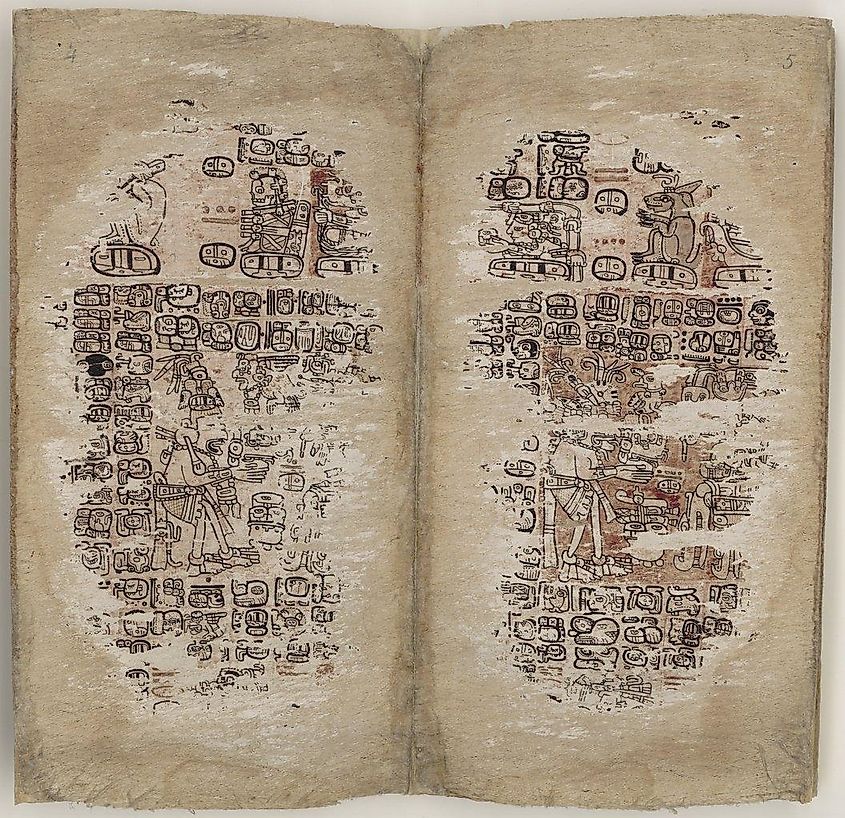
The Mayans were no slouches when it came to innovation and technology. The Mayan understanding of the universe and the solar system still baffles scientists and historians to this day. It is truly amazing how accurately they could map out the stars with such accuracy while using sticks and stones as tools to do so. Their knowledge of the solar system was so great that they could even predict solar events such as lunar eclipses. This remarkable achievement was partially thanks to the Mayans' expertise in mathematics as well.
The Mayans' advanced skills in math would also help them engineer marvelous cities that were complete with towering pyramids and grand courtyards, all made out of stone blocks weighing several tons. This architectural feat is made only more impressive, considering they had no access to draft animals like horses or oxen.
Sadly, These grand cities would be the only trace of their civilization for hundreds of years before their language was deciphered. What caused the Mayan collapse was likely due to a chain of natural and political disasters, but the exact cause remains a mystery. Whatever the primary reason, by 900 AD, most of the great Mayan cities were left completely abandoned, aside from a few holdouts in the south.
Aztec Achievements
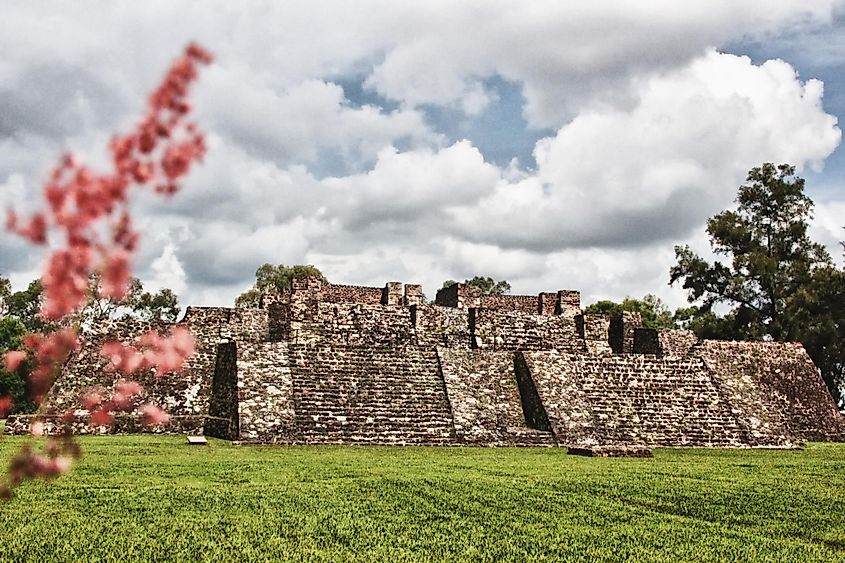
The most outstanding achievement of the Aztecs was undoubtedly the city of Tenochtitlan. This city is thought to have been home to as many as 120,000 people at its height, meaning it was both the most densely populated and largest city in Mesoamerican history.
The Aztecs were fantastic city planners. Tenochtitlan was separated into five distinct districts, all of which were kept apart by canals that flowed through the city. In the middle of the emperor's palace, along with the great temple dedicated to Huitzilopochtli. The other sectors were areas designated for the religious class, artisans, and merchants.
Sadly, the city would be almost entirely by the Spanish in 1521 under the leadership of the famed Conquistador Hernan Cortez. Many of its great artifacts were looted, and much of the population was either killed or enslaved. Under Spanish rule, the modern capital of Mexico, Mexico City, was built on top of the ruins of the once-great Aztec capital.
Calendars And Cusine
Much like our own calendar, the Mayans also used a calendar that had 365 days in a year. Called the Haab, this calendar would have been the most accurate solar calendar in the world until the advent of the Gregorian calendar. However, they also used a second calendar for religious ceremonies and other festivities called the Tzolkin which had only 260 days.
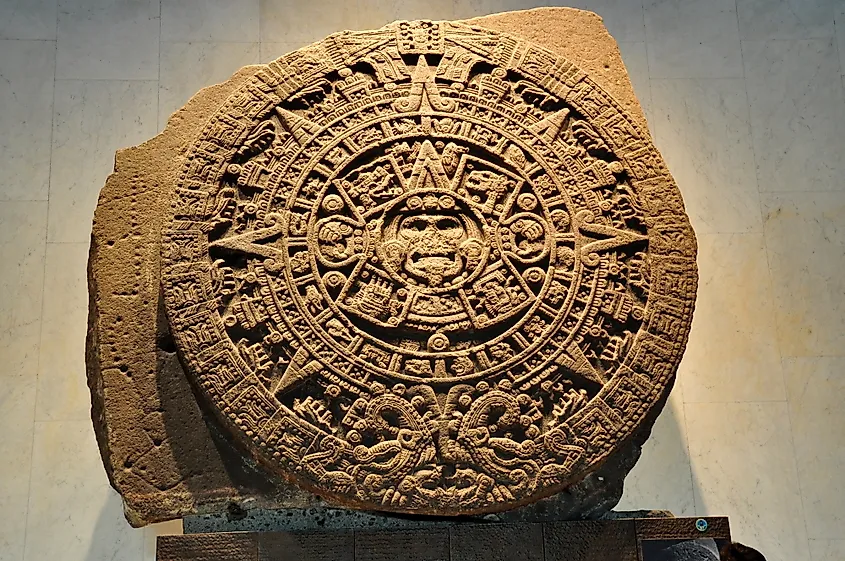
The Aztecs, on the other hand, used a very similar calendar that they most likely inherited from the Mayans. The largest difference between the two was that the Aztecs used sequences of 20 and 13 days and would use these to measure months and various religious holidays. The cuisine of both people was also remarkably similar. Both civilizations relied heavily on cultivating maize, a staple in both people's diets. Fruits and vegetables, primarily squash and beans, would have served as a common second option as well. Most commoners would have had little access to a balanced diet and would have rarely eaten meat. Only the rich and powerful would have had things like boar available to them.
While the Aztecs and the Mayans shared a lot of similarities, the largest differences probably come from their faith and governmental structure. The Aztecs were almost certainly more warlike than their Mayan cousins, and this is represented in how often they fought their neighbors and how much more prevalent human sacrifice was. While the Mayans did occasionally kill people in religious ceremonies, the Aztecs made human sacrifice a core belief. The Aztecs were also more centralized than the Mayans. The Mayan system clearly favored high local autonomy, whereas the Aztecs ruled directly and with a certain level of brutality that the Maya never really displayed.
Ruled directly as an empire, the Aztecs set out to conquer most of Central and Southern Mexico by the time the Spanish arrived in the early 16th century. Considering what we now know about the harsh rule of the Aztecs, it is no wonder why many Mesoamerican peoples took the side of the Spanish against their Aztec overlords.
Today, both civilizations enjoy a long-lasting legacy that still permeates into the modern era. The Mayans, as mysterious as they can be, are often hailed as the most successful and accomplished Mesoamerican people in terms of science and mathematics. While the Aztecs are regarded as master city builders and masters of warfare and governance.
Both civilizations were centuries ahead of their time in their own regard, and there is no telling what else we might find out about these once-great peoples as more discoveries are made at the various dig sites that are operational across Central America.











